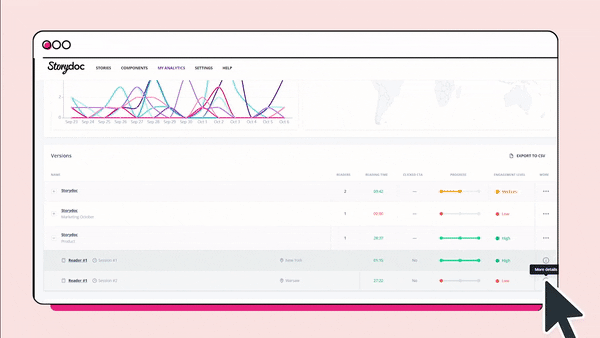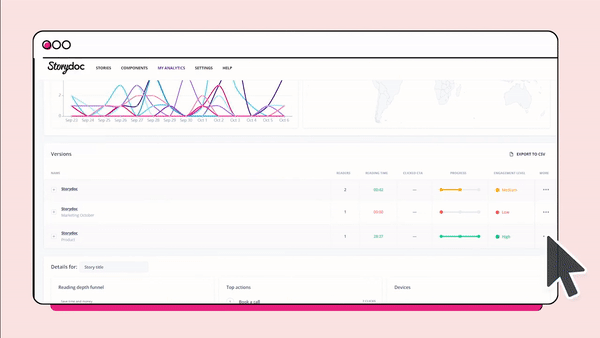How to Make Sales Collateral That Drives Pipeline
Learn to make effective sales collateral that stands out and generates sales. Find out how to measure and optimize sales collateral and make it accessible.


Learn to make effective sales collateral that stands out and generates sales. Find out how to measure and optimize sales collateral and make it accessible.
Short answer
TIP: You can do this kind of personalization at scales using Storydoc. Our sales collateral creator integrates with your CRM and can both pull information from there into your decks AND create personalized deck directly from the contacts page in your CRM.
NOTE: While reading time is a valuable metric, it's not the best indicator for a deal moving forward. It is better to use a smart engagement score which combines multiple engagement metrics, like time spent and reading depth to give you a more accurate estimation about the deal's status. This type of aggregate engagement metric is provided in Storydoc.
Tips for measuring sales collateral:
If you're feeling lost in the sea of sales collateral options, you're not alone. With so many different types available, it can be tough to figure out which ones will make the biggest impact on your audience.
But fear not, because we're here to help you navigate the waters and create sales collateral that will have even the most doubtful prospects begging to buy. So, let's jump in!
1) Align with your sales team
Collaborate with your sales team and ask them directly about their needs. What types of information do they need to close deals? What types of materials would make their lives easier?
By understanding their pain points and the types of questions they frequently receive from prospects, you'll be better equipped to create the right collateral.
2) Assess your ability to communicate value
Take a step back and assess your ability to effectively communicate the value of your product or service. Are there any gaps in your messaging? Are there aspects of your offering that are difficult to articulate? Addressing these gaps will help you create materials that better explain and highlight the unique value that your product or service provides.
Pay attention to the types of questions that prospects are asking. This feedback can help you identify areas where additional collateral might be needed to address their concerns or objections.
4) Do a prioritization matrix analysis:
Prioritize the creation of collateral by doing a prioritization matrix. This means evaluating the feasibility and importance of creating different types of materials, and focusing on creating what's highly-important and highly-feasible first.
By doing this, you can ensure that you're using your time and resources effectively and making the biggest impact possible.
In most companies, the creation and distribution of sales collateral is a team effort involving collaboration between sales, marketing, and sales enablement teams, with the support of designers, videographers, and developers.
In small businesses, a single person or department might handle it, while larger corporations may have a dedicated sales collateral manager or agency.
Distributing the collateral is mostly the job of AEs, SDRs, and BDRs.
Professionals involved in creating sales collateral:
Collaboration between sales and marketing teams is crucial for the success of sales collateral. By working together, they can create materials that effectively communicate the value of a product or service and drive results.
If your company has been around for a while, you're sitting on a wealth of valuable content - from persuasive blog posts to engaging videos, informative infographics to impactful case studies.
Instead of creating your sales collateral from scratch, repurpose what you already have. You can make these resources even more high converting by using an SEO tool.
Content you can repurpose into great sales collateral:
Stop losing opportunities to ineffective collateral.












